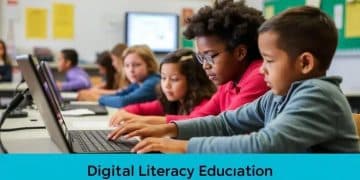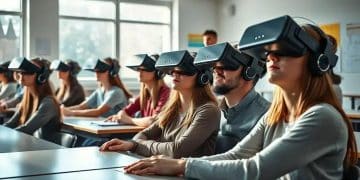School technology integration trends shifting classrooms
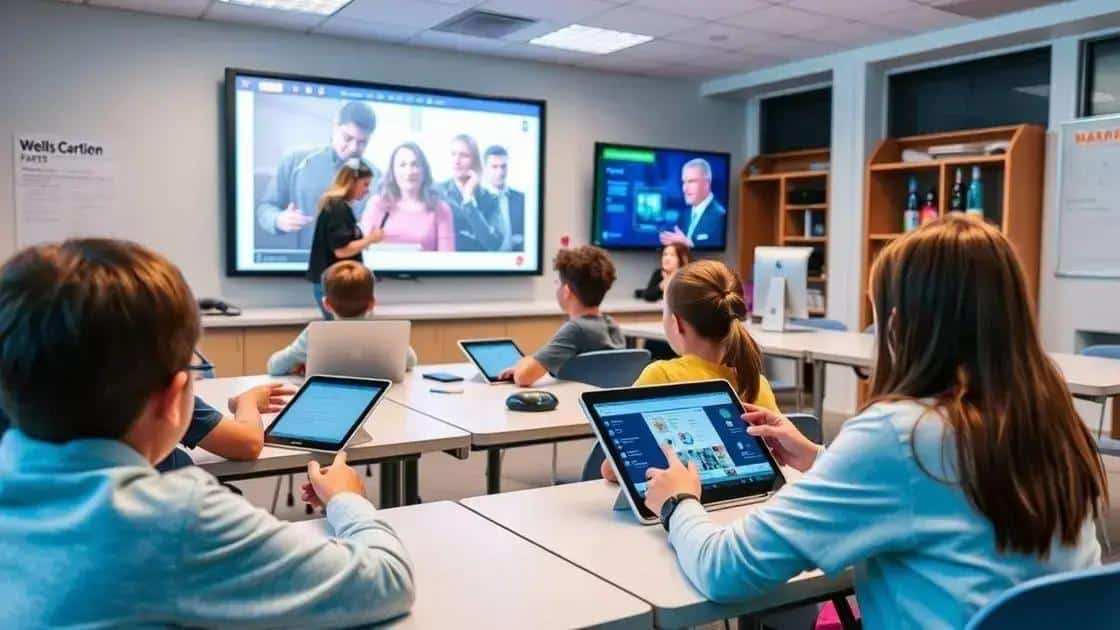
The future of school technology integration trends will focus on augmented reality, personalized learning through AI, and enhanced collaboration tools, shaping the way students engage in their education.
School technology integration trends are reshaping classrooms in ways we never imagined. Have you ever wondered how these changes influence education? Join us as we explore the latest developments and their impact on learning.
Understanding school technology integration
Understanding school technology integration is essential in today’s educational landscape. Schools are increasingly using technology to enhance learning and engage students. This integration allows teachers to utilize digital tools effectively, transforming traditional teaching methods.
Benefits of Technology in Schools
Integrating technology in classrooms has numerous benefits. First, it promotes interactive learning experiences. Second, it encourages collaboration among students. Finally, it helps tailor education to individual needs.
- Enhances student engagement through interactive platforms.
- Facilitates access to a wide range of resources.
- Supports personalized learning experiences.
- Encourages collaboration and communication.
Furthermore, as educators become more adept at using technology, their teaching methods evolve. For instance, project-based learning has gained traction, allowing students to work on relevant projects that connect to real-world scenarios. This method not only fosters creativity but also enhances critical thinking skills. Schools are implementing learning management systems, which provide a centralized hub for resources and assignments.
By adopting various technologies, teachers can engage students in ways that resonate with their experiences outside of school. The use of applications and educational software makes learning more accessible, bridging gaps for students who may struggle in traditional settings.
As we move forward, understanding how to effectively implement these tools will be crucial. Teachers will need ongoing training to keep pace with emerging technologies. Schools that prioritize these aspects will likely see improved outcomes and higher levels of student satisfaction.
Latest trends in educational technologies
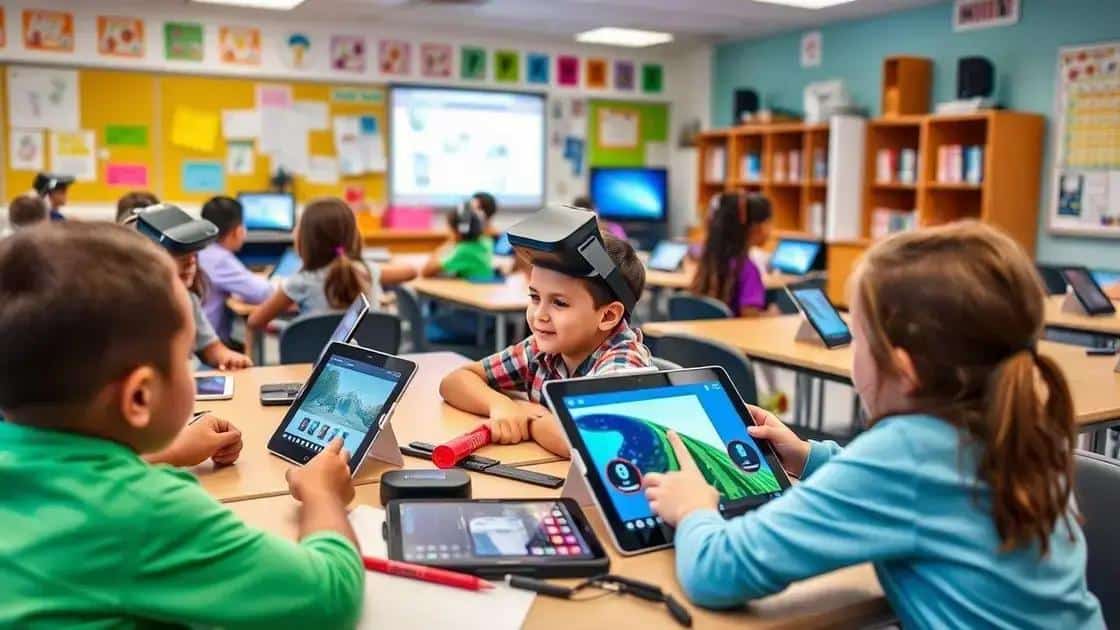
Staying updated on the latest trends in educational technologies is crucial for educators and administrators alike. Technology in education is evolving rapidly, and understanding these changes can benefit teaching practices and student learning.
Emerging Technologies in Education
One major trend is the rise of artificial intelligence (AI) in the classroom. With AI tools, teachers can personalize learning experiences for students. These tools can analyze student performance and adapt lessons accordingly. Additionally, virtual reality (VR) is becoming popular, allowing students to immerse themselves in interactive environments that enhance their understanding of complex concepts.
- Artificial intelligence providing individualized learning paths.
- Virtual reality offering immersive educational experiences.
- Gamification making learning fun and engaging.
- Mobile learning increasing accessibility for students.
Another significant trend is the incorporation of gamification in lessons. By using game mechanics, teachers can motivate students and encourage participation. This approach makes learning enjoyable and encourages healthy competition. The use of mobile devices also supports this trend, enabling students to learn anytime and anywhere. With mobile learning, educational content is more accessible, allowing for flexibility in study schedules.
Furthermore, collaborative tools are trending, especially in remote learning situations. Applications like Google Classroom and Microsoft Teams facilitate group work, ensuring students can collaborate effectively, regardless of their physical location. As technology continues to advance, schools are adopting these tools to enhance communication and teamwork among students.
As we consider these trends, it’s essential to recognize their potential impact on the future of education. Integrating these technologies can create a more engaging and effective learning environment, preparing students for the demands of the modern world.
Impact of technology on student engagement
The impact of technology on student engagement is profound and continuously evolving. When technology is integrated into the classroom, it transforms how students interact with learning materials and each other.
Enhancing Interaction and Collaboration
Interactive tools like smartboards and educational apps foster greater participation. Students are more likely to engage with interactive content rather than passively consume information. Technology encourages collaboration among peers, allowing them to work together on projects, regardless of their physical location.
- Increased participation through interactive lessons.
- Collaboration platforms for group projects.
- Access to diverse resources for enhanced learning.
- Immediate feedback from teachers and peers.
Moreover, technology offers various ways to personalize learning, catering to each student’s unique needs. For example, adaptive learning software adjusts the difficulty of tasks based on a student’s performance. This customization helps to keep students engaged and motivated. As they progress, they feel a sense of accomplishment.
Another factor is the ability to integrate gamification into learning experiences. By introducing game-like elements, such as rewards and challenges, teachers can motivate students to participate in their education actively. Gamification makes learning fun and encourages students to take ownership of their progress.
Additionally, virtual and augmented reality can create immersive experiences. Students can explore historical sites or conduct science experiments in a virtual space, which enhances understanding and retention. These experiences captivate students’ attention and drive a deeper interest in subjects they might otherwise find dull.
Future predictions for classroom tech
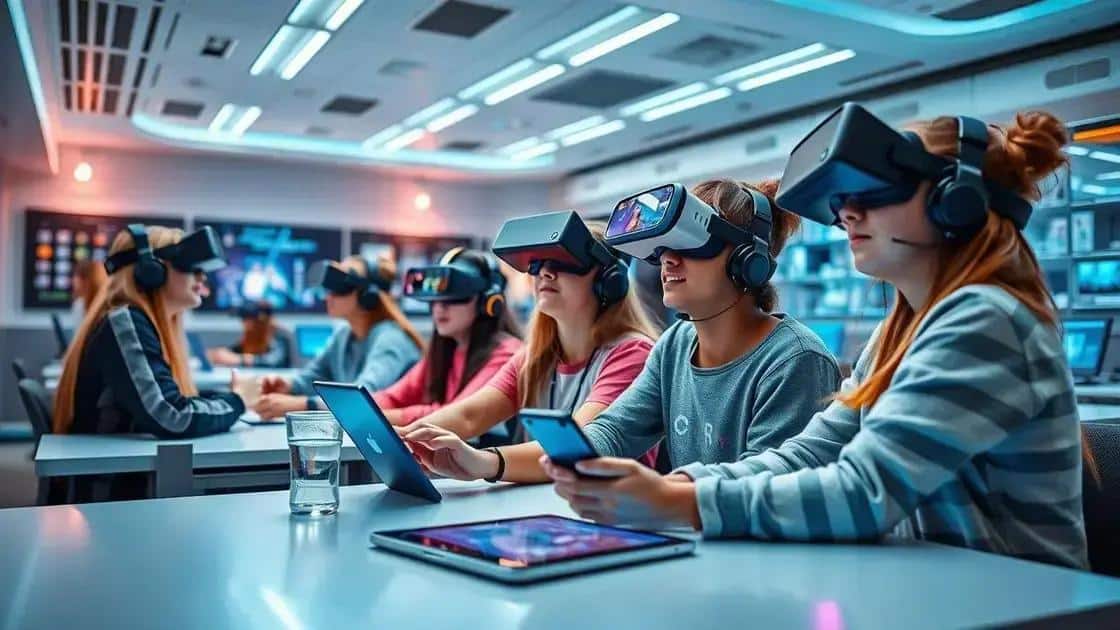
Future predictions for classroom technology suggest transformative changes in the way students learn and teachers instruct. As technology continues to evolve, we can expect a more integrated and personalized approach to education.
Augmented Reality and Virtual Learning
One significant trend is the growth of augmented reality (AR) and virtual reality (VR) in classrooms. These technologies provide immersive learning experiences that engage students in ways traditional methods cannot. Imagine exploring ancient civilizations or tackling scientific challenges through interactive simulations; these tools inspire curiosity and enhance understanding.
- VR can create field trips to historical sites globally.
- AR allows students to visualize complex concepts in 3D.
- Interactive simulations enhance problem-solving skills.
- Students can experience science experiments safely in a virtual lab.
Moreover, artificial intelligence will play a crucial role in customizing learning experiences. AI-driven platforms can assess student performance in real-time and adapt curricula to meet individual needs. This personalization empowers students to learn at their own pace while providing valuable insights to educators.
Collaboration will also take on new forms. Tools enabling remote learning will continue to improve, facilitating group projects that include students from different locations. The future classroom may blend physical and virtual spaces, allowing students to collaborate seamlessly, regardless of where they are.
As we envision the future of technology in education, consider the potential of data analytics. Educators will have access to more detailed data, helping them understand student behavior, engagement, and performance trends. This can lead to actionable insights and improved teaching strategies aimed at maximizing student success.
FAQ – Frequently Asked Questions about Classroom Technology
What role does augmented reality play in education?
Augmented reality enhances learning by providing immersive experiences that make complex subjects more engaging and understandable.
How can artificial intelligence improve personalized learning?
Artificial intelligence can tailor educational content to meet the individual needs of students, adapting lessons based on their performance.
What are the benefits of gamification in the classroom?
Gamification increases student engagement by making learning fun, encouraging participation, and motivating students to achieve better results.
How can technology facilitate collaboration among students?
Technology allows students to collaborate on projects in real-time, regardless of their location, by using tools that enable communication and teamwork.
